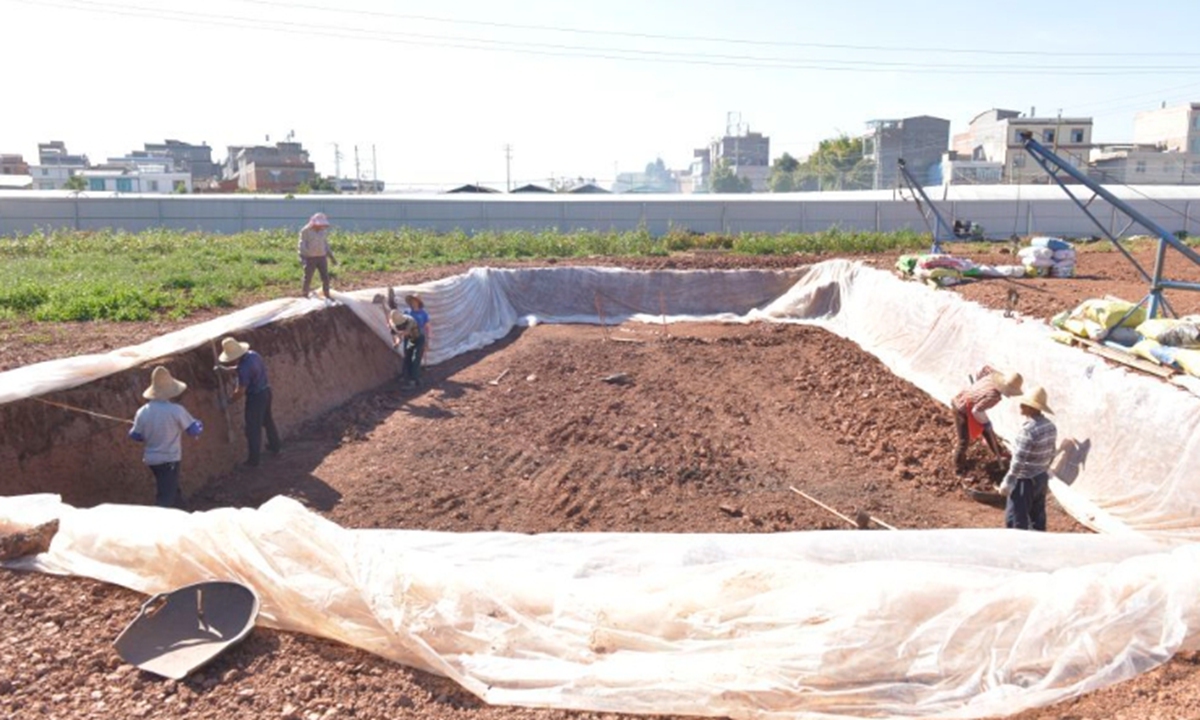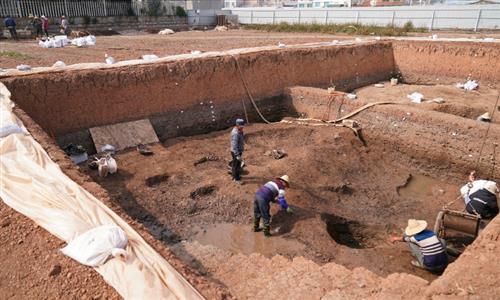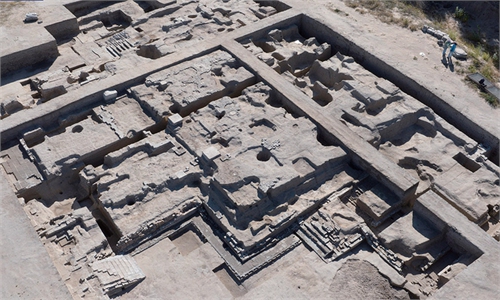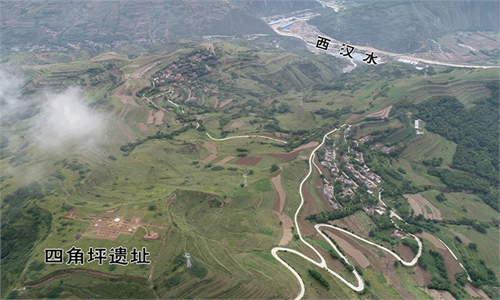ARTS / CULTURE & LEISURE
New findings illuminate details about ancient capital in Southwest China

Photo: Xinhua
New archaeological discoveries in Southwest China's Yunnan Province have brought archaeologists closer to figuring out the layout of the administrative quarter of ancient Yizhoujun, a region covering large swaths of modern Yunnan.In 2023, excavations covering a total area of 1,000 square meters at the Hebosuo site in the Jinning District of Kunming, the capital of Yunnan, uncovered architectural structures, road and pit ruins, and nearly 700 artifacts, among other findings, according to Jiang Zhilong, a researcher at the Yunnan provincial cultural relics and archaeology institute and leader of the excavation team of the Hebosuo site.
The extent of the administrative quarter of Yizhoujun during the Han Dynasty (202BC-AD220) has been preliminarily determined. At the Hebosuo site, over 300 seal impressions, more than 300 word-inscribed bamboo slips, architectural ruins, and structures believed to be the foundations of the city wall have been discovered.
A road section measuring approximately 12 meters in width, an extension of the road discovered in 2021, was uncovered. Archaeologists believe this was the main avenue of the capital city of Yizhoujun.
Since 2021, various historical sites have been discovered at Hebosuo, including ash pits, house ruins, tombs, wells and road remains. These findings indicate that the central government of the Western Han Dynasty (202BC-AD25) exercised administrative power over the Yunnan region, providing important physical evidence for the formation and development of a unified, multi-ethnic China.
"We have obtained important clues to search for the city wall, and as the excavation continues to reveal ruins of major roads and large structures, we are close to figuring out the layout of the administrative quarter of Yizhoujun," Jiang said.



